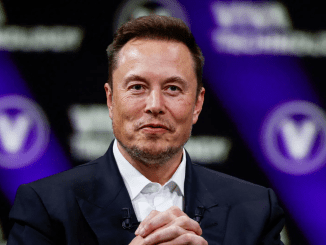
Elon Musk, the billionaire entrepreneur known for revolutionizing industries through companies like Tesla and SpaceX, is once again making headlines—but this time, for his efforts in social development. In a groundbreaking move, Musk has invested 5 million dollars into building housing for low-income families. The goal is not only to provide shelter but to foster long-term, sustainable communities that can thrive economically and socially.
This initiative represents a significant shift in how tech billionaires approach philanthropy. Rather than one-time donations or temporary solutions, Musk is focusing on structural, sustainable change. His commitment to improving housing infrastructure demonstrates a clear understanding of the challenges faced by low-income communities in accessing safe and affordable living conditions.
The Vision Behind the Project
The primary objective of Musk’s initiative is to combat the growing housing crisis affecting millions of Americans. As urban areas become increasingly expensive, more families are pushed to the fringes, struggling to find decent housing. Elon Musk’s decision to allocate 5 million dollars towards this issue aims to address this imbalance.
According to sources close to the project, the housing units will be constructed using eco-friendly materials and energy-efficient technologies, reflecting Musk’s dedication to sustainability. The communities are expected to feature solar-powered homes, clean water systems, and efficient waste management processes. In addition, the project will focus on creating inclusive neighborhoods with access to education, healthcare, and job opportunities.
Implementation and Location
The housing project is initially being piloted in select locations in Texas and California—states where the housing crisis is particularly severe. These regions have experienced a surge in homelessness and housing instability over the past decade, primarily due to skyrocketing real estate prices and stagnant wages.
Construction is set to begin within the next year, with the goal of completing the first phase within 18 months. The units will be made available to qualifying low-income families through a lottery system that prioritizes families with children, veterans, and individuals with disabilities. Each home will include essential amenities, ensuring a high quality of life while remaining cost-effective.
A Model for the Future
Musk’s approach is being hailed as a model for future housing initiatives. By integrating sustainability and community development, the project goes beyond providing basic shelter. It promotes long-term stability and upward mobility. Experts in urban planning and social policy have praised the initiative for addressing not just the symptoms but the root causes of poverty and homelessness.
What sets this project apart is its comprehensive design. Rather than isolating low-income housing in underdeveloped areas, Musk’s plan integrates these homes into mixed-income neighborhoods. This strategy helps break down socioeconomic barriers and encourages a more inclusive society.
Economic and Social Impact
Investing in affordable housing has far-reaching benefits, not just for the individuals directly impacted but for society as a whole. When families have stable housing, children perform better in school, adults are more likely to maintain employment, and communities experience lower crime rates.
Furthermore, the use of sustainable building materials and renewable energy sources reduces environmental impact and lowers utility costs for residents. Over time, this approach could significantly reduce the economic strain on families living paycheck to paycheck.
The initiative is also expected to create thousands of jobs in construction, engineering, maintenance, and social services, thereby stimulating local economies.
Public and Governmental Response
Public response to Elon Musk’s housing project has been overwhelmingly positive. Social media platforms are abuzz with praise for Musk’s forward-thinking approach. Many see it as a refreshing example of how private wealth can be used to address public issues.
Several city officials and lawmakers have expressed interest in collaborating with Musk to expand the project. Some are even considering policy reforms to streamline zoning and construction regulations, making it easier to build affordable housing in their communities.
There is also talk of partnerships with nonprofit organizations and educational institutions to offer vocational training and community services in these new neighborhoods. This holistic support system aims to empower residents and ensure long-term success.
A Broader Commitment to Social Responsibility
This housing initiative is not Musk’s first foray into philanthropy. Through the Musk Foundation, he has contributed to numerous causes, including renewable energy research, education, and pediatric health. However, this 5 million dollar housing investment represents one of his most ambitious and socially impactful projects to date.
Musk has stated in interviews that he believes technology should be used to solve real-world problems—not just create profit. His actions suggest that he is willing to put this philosophy into practice, leveraging his vast resources to create tangible improvements in people’s lives.
Conclusion
Elon Musk’s decision to spend 5 million dollars on building housing for low-income families is a significant step toward solving one of society’s most pressing issues. By focusing on sustainability, community integration, and long-term development, this initiative stands out as a beacon of hope and a potential blueprint for future housing solutions.
As construction begins and the first families move in, the true impact of this project will come into focus. If successful, it could inspire other wealthy individuals, corporations, and governments to rethink their approach to philanthropy and social investment. In doing so, it might just pave the way for a more equitable and sustainable future.


